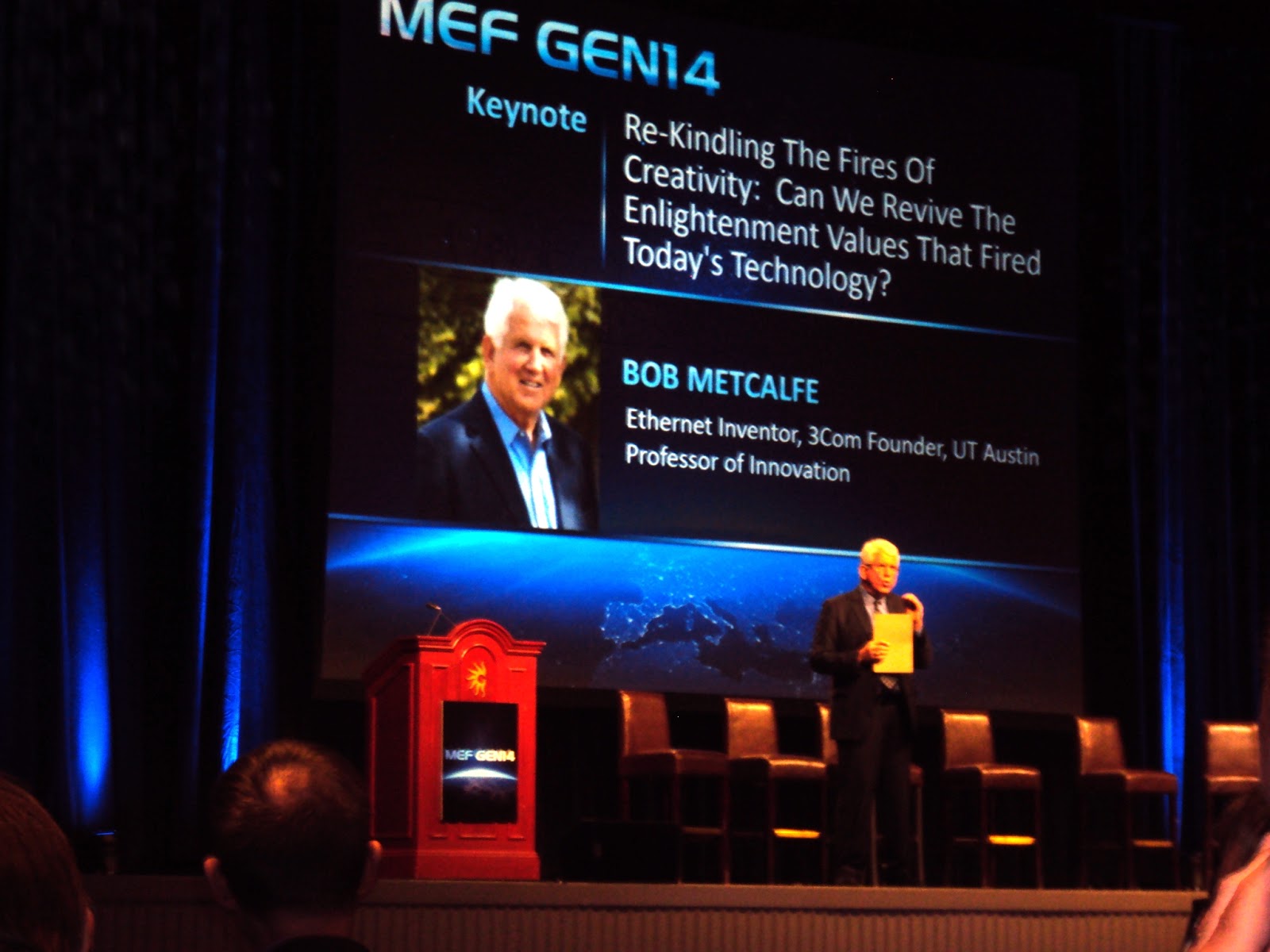It’s been more than a year since I wrote my last blog post. I was busy with other work (office, teaching, speaking, reading, traveling, advising, consulting, family…. ) and couldn’t really find a time to write something, though I had lot of things to share. However, I kept on my micro-blogging activities on twitter as usual.
This post is actually a summarization about Metro Ethernet Forum (MEF) Global Ethernet Networking (GEN) 14 (MEF GEN14).

I attended the 1st ever MEF GEN14 conference from 17th to 20th November 2014 at Gaylord National Resort and Convention Center at National Harbor waterfront entertainment district, located eight miles south of Washington DC, USA. On 17th, I had the privilege of attending the MEF Certified Professional’s convention as a guest resource person. Together with Marjory Sy (Carrier Ethernet Technical Lead, PLDT) and Sendang Praptomo (Telin, Singapore), I participated in the panel discussion ”Evolution of the Carrier Ethernet Professionals Community”. The panel was moderated remotely Dr. Vishal Sharma (Metanoia) together with on-site support of Daniel Bar-Lev (Director Certification/Strategic programs, MEF). The unique thing was that all of them are members of the LinkedIn Carrier Ethernet Group.
I too had the privilege of listening to Prof. Bob Matcalf’s (Ethernet Inventor, 3Com founder and University of Texas, Austin Professor of Innovation) keynote on 18th and later meeting him. In his keynote, he opposes net neutrality and talked about Freedom Of Choice Among Competing Alternatives (FOCACA) specially on the NFV and SDN choices.
The Third Network concept was explained by Nan Chen, President MEF based on Network as a Service (NaaS) principles. Carrier Ethernet 2.0 (CE 2.0) provides assured Quality of Service (QoS) and security. It lacks agility. Internet on the other hand provides on-demand, ubiquitous services without any service assurance. Third Network tries to bring the best of both worlds by providing agility, assurance and orchestration.
Software-Defined Networking (SDN) and Network Functions Virtualization (NFV)
As any other conference these days, SDN and NFV played a big role throughout the conference, at leats using the words "SDN" and "NFV" :-) . It was mentioned by one of the speakers that Google manages ~10,000 servers with 1 guy and for a telco its 10 servers managed by 1 guy, which was seen as inefficient. With lots of things discussed about SDN and NFV, somebody viewed the whole thing as Software Defined Operator (SDO) meaning a combination of Internet Protocol (IP), SDN and infrastructure cloud NFV in telco environment. Software Centric Network (SCN) was another name given to the combination of SDN and NFV. With everyone's talking about SDN and NFV, the question arises: Is software good and hardware bad?”. Almost all viewed SDN as a concept and not as a technology. SDN brings in control and automation, NFV brings cloud to the network, Carrier Ethernet sits in the heart of the access network and Data Center (DC). The financial guys questioned the economic model of SDN and NFV. For some of the participants SDN was "Still Don't Know".
The importance of having a single orchestrator communicating with multiple domain controllers was highlighted.
Neela Jacques from Open DayLight shared his thoughts on open SDN and explained that Open DayLight is a community trying to build a common code base. Their charter looks similar to that of Open Networking Foundation (ONF), both talking about the importance of a single entity NOT getting the control of SDN.
Cisco explained MPLS-SR (Multi Protocol Label Switching - Segment Routing), showing a halfway SDN migration approach.
Going open source and using proprietary SDN was also discussed in the view of vendor lock-in. It looks like having a vendor is also beneficial, if it brings win-win situation.
While there is a clear shift seen in the industry where operators are moving to IP/Ethernet services/networks from (Time Division Multiplexing) TDM services/networks, it was noted that Ethernet Operation, Administration and Management (OAM) needs improvements compared to TDM’s mature OAM. Since IP is the end -to-end protocol, it was mentioned that all telecom services can be delivered via IP networks and should be: “everything on IP and IP on everything”. Fiber optics, Dense Wavelength Division Multiplexing (DWDM), Ethernet, IP, MPLS are considered IP helper technologies. In this situation, Open-IX highlighted the importance of having standards for IX/IXP operators.

On the mobile and Mobile Backhaul (MBH), it was mentioned that MEF currently doesn’t support Common Public Radio Interface (CPRI) on the front haul. It was also mentioned that MEF22.1 doesn’t address Time of Day (ToD) and phase. This will be addressed in MEF22.2 in the future. 5G was explained by Ericsson as using frequency above 3 GHz (up to 100 GHz) from 2020 to 2030 time frame and coming back to less than 3 GHz frequencies after that. 5G is expected to reduce (compared to 4G) the control traffic and will introduce the current User Equipment (UE) multi-site connectivity to a multi-layer connectivity. In summary, 5G was viewed as a combination of 10 m cell radius, 1 ms over the air latency, licensed and unlicensed spectrum, 10 Gbps on the air interface requiring Tbps backhaul bandwidth requirements.
On the video side it was mentioned that 4K video needs 3 times the bandwidth of High Definition (HD) video. Together with big screens it generates even more bandwidth to telco network.
On handling bandwidth, it was mentioned that telcos, out of the 2 options (increase bandwidth, optimize bandwidth) have chosen increasing the bandwidth (building capacity) over the years. With regard to meeting the bandwidth requirements, Google fiber, was viewed more as a measure to scare the telecs to build the bandwidth and not that Google really wants to build fiber networks.
The exhibition area of the GEN14 conference was really good with the participation of lot of vendors and operators. The demonstrations were more on how to use SDN, NFV, orchestration, SDN controllers etc. to achieve more programmable service assurance and fulfilment for telcos, not necessarily for Carrier Ethernet services, but in general for all end-to-end services. Even the vendors like Juniper, who are much strong in hardware, demonstrated NFV (Virtual Customer Premises Equipment (vCPE)). The impact of latency was questioned by the audience.
The key takeaways of the conference, as explained by Stan Hubbard, MEF GEN14 Program director on closing remarks are;
- Third Network
- Lifecycle Service Orchestration (LSO) (LSO runs from service catalogue to usage)
- LSO/SDN/NFV: 3 pillars



No comments:
Post a Comment